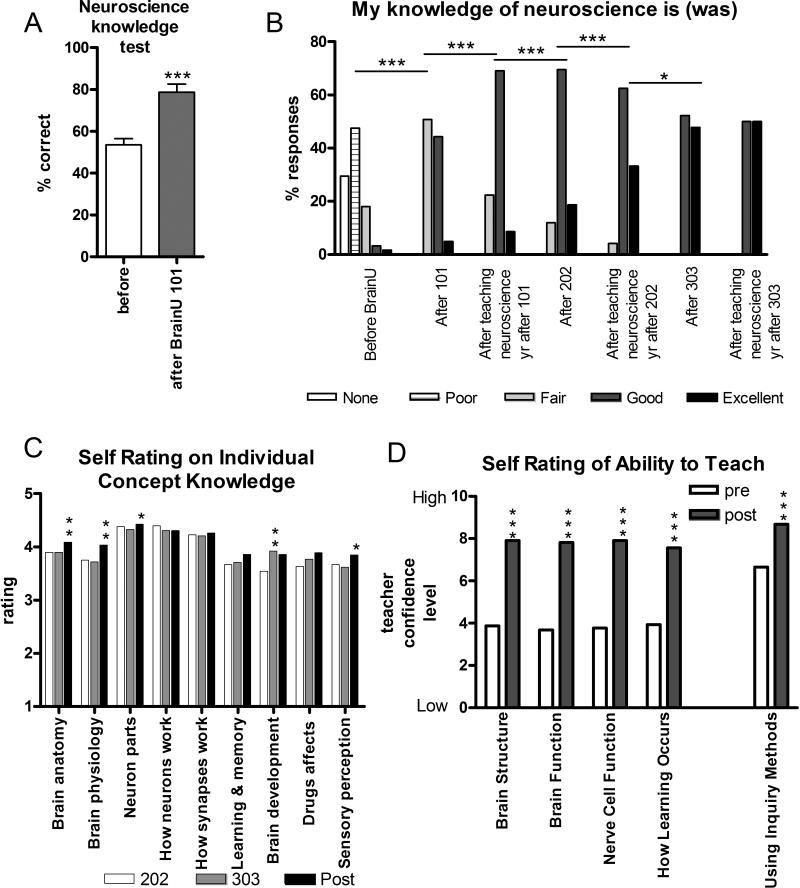Figure 1.
BrainU teacher content knowledge assessment and self-ratings of neuroscience knowledge. (A) Teacher content knowledge was assessed using an 11 question multiple choice test given at the beginning and end of a BrainU workshop. Bars represent M ± SEM across N = 5 separate workshops. (B) Teacher survey ratings of their own general knowledge of neuroscience before and after different BrainU workshops. Numbers of surveys tallied, from left to right, N = 61, 61, 58, 59, 59, 23, and 21. Asterisks represent p values for 2-tailed t-test comparisons of successive assessment points, ***p<0.001, *p<0.05. (C) Teacher survey ratings of their own knowledge on specific neuroscience concepts after BrainU 202, BrainU 303, and after teaching for one year post-BrainU 303. Number of surveys tallied at each time were N = 52, 39 and 35, respectively. Asterisks represent p values for 2 tailed t test comparisons of mean ratings compared to the bar to the immediate left, **p<0.01, *p<0.05. (D) Teacher survey ratings of their own ability to teach specific neuroscience concepts and using inquiry pedagogy (***p<0.001). A) Permission requested from (Dubinsky, 2010). D) Permission requested from (MacNabb et al., 2006b).

